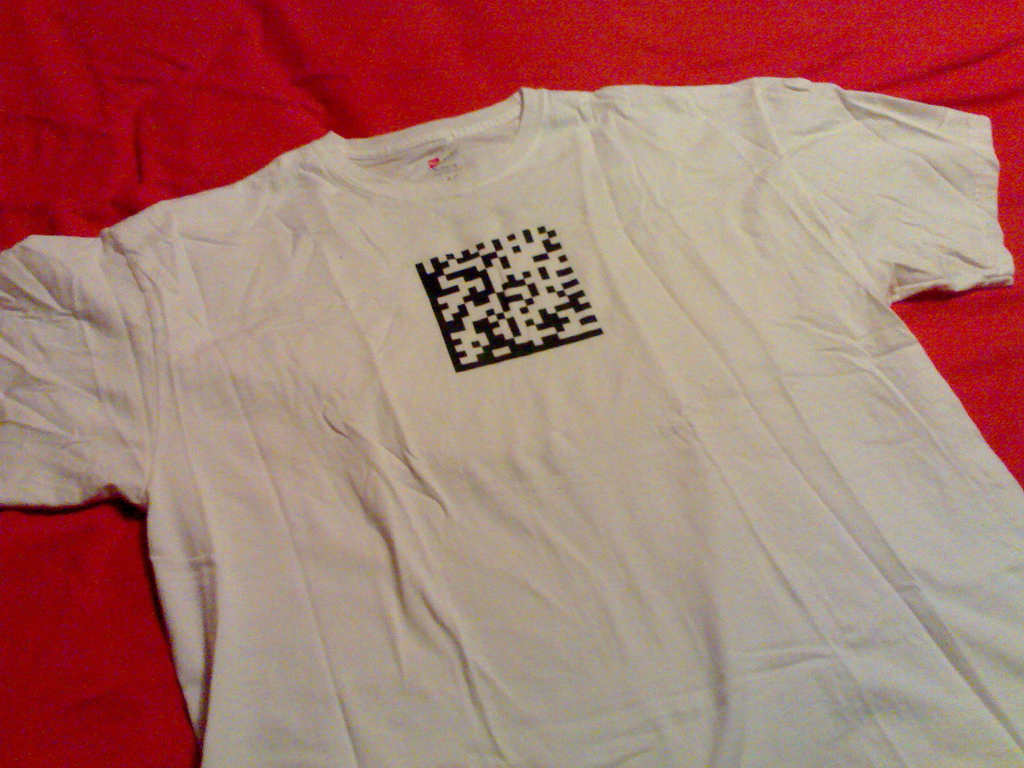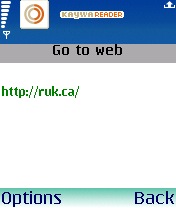I first got interested in 2D barcodes after following a link on Guy Dickinson’s website to Semacode.org last July.
So interested, indeed, that I made myself a T-shirt:

The 2D barcode on the T-shirt, when it gets “decrypted” by a barcode reader, translates to http://ruk.ca — the address of this website. The idea is that a suitably equipped mobile device can be pointed at the T-shirt and its web browser automagically taken to this web address.
I did my original experimenting with the Semacode reader for my Nokia N70. This week, inspired by Nokia’s recent interest in 2D barcodes — they call them “mobile codes” — I grabbed The Kaywa Reader. It’s a very slick application that “just works.” I fired up the app, pointed it at my T-shirt and, without any action on part, the following popped up on my mobile:

It all worked so seamlessly that it was magical enough to show off some of the true promise of this crazy scheme. Of course this could all turn out to be simply another variation on the CueCat debacle. But I’ve got some ideas…
If you want to try making your own 2D barcodes, you can use Kaywa’s tool or the Semacode tool.
 I am
I am
Comments
Subsequent to posting, I’ve
Subsequent to posting, I’ve found that the formal generic technical term for these “2D barcodes” is Datamatrix.
Those t-shirts will look even
Those t-shirts will look even better in colour - http://news.bbc.co.uk/1/hi/tec… . Full colour codes will be able to hold multiple pages of info!
Add new comment